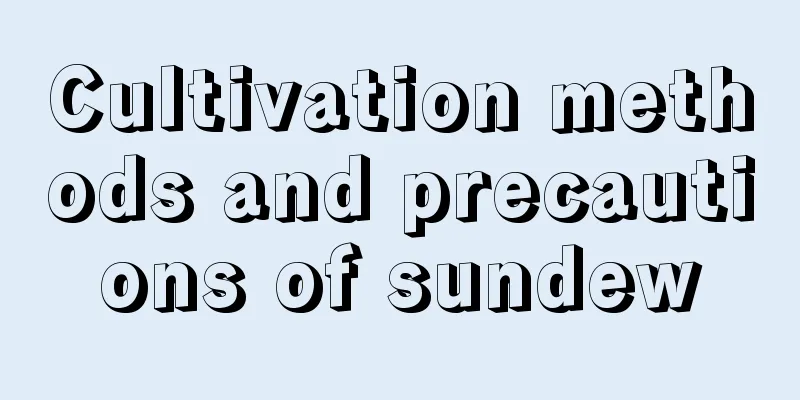Cultivation methods and precautions of sundew

How to grow sundewsoilSundew has low requirements for soil. You can use a mixture of peat soil, perlite and river sand, or you can use sphagnum moss or pure peat soil. Light and temperatureSundew likes sunlight, and sufficient light is conducive to the bright color of sundew. When caring for sundew, it is necessary to maintain a long period of light every day, and it can be placed on the balcony or windowsill. If there is no way to have direct access to direct light, bright diffuse light can also be provided. Please note that when the light is strong in summer, shade is needed to avoid burns. Sundew does not like an environment that is too cold or too hot. The suitable temperature for its growth is between 15℃-25℃. It needs to be kept warm in winter, and the minimum temperature needs to be kept above 0℃. It should be kept indoors if necessary. In summer, it will go dormant if the temperature is too high. Watering and fertilizingSundew can tolerate moisture, but does not require high air humidity. However, the humidity should not be too high in summer to avoid rotting of stems and leaves. When watering, you need to keep the soil moist. Generally, you can use the "waist water" method to supply water, and soft water is best. When applying fertilizer, it should be applied thinly and frequently. During the growing season, apply thin liquid fertilizer once or twice a month. Pay attention to the concentration to avoid fertilizer damage. Things to note when growing sundewReproduction methodTo propagate Drosera, you can use cuttings, usually leaf cuttings, or remove the small bulbils on the plant and plant them in time. You can also use sowing propagation, which is also relatively simple. Pests and diseasesDuring its growth process, sundew will encounter some pests in spring and summer, such as aphids, caterpillars and cutworms. These pests may eat the leaves of sundew. Once found, they need to be captured and killed in time, and pesticides can be used if necessary. |
<<: Cultivation methods and precautions of Gaillardia
>>: The cultivation methods and precautions of Kaempferia galanga
Recommend
How to grow lisianthus flowers
1. Water culture steps 1. Preparation: When carin...
What is expansive soil?
Expansive soil, also known as bentonite and swell...
Key points for caring for succulent plants in June
Key points for caring for succulent plants in Jun...
The order of succulent cuttings
1. Handling leaves Pick leaves from plants that a...
Differences between rambutan and lychee
Appearance Rambutan is native to Malaysia, Vietna...
How to plant peacock grass seeds
1. Sowing time There is no clear limit for sowing...
How to prune red leaf Photinia
When to prune Photinia The pruning time for Photi...
What to do if the leaves of Kalanchoe become soft and thin
1. Reasons 1. If we water too much during daily p...
How to hydroponically cultivate bamboo palm
Environmental conditions required for hydroponics...
What are the benefits of dandelions
1. Clear away heat and detoxify Dandelion is cold...
How to prune chrysanthemums and in which month is it suitable to prune them?
Chrysanthemum pruning time Chrysanthemums need to...
Characteristics and functions of the paulownia tree
1. Characteristics of the sycamore tree The paulo...
She was so cruel that the flower even sprouted 10 buds and nothing could be stopped!
The cactus was ruthlessly chopped, and the cubs f...
How long is the growing cycle of cilantro?
Introduction to Coriander Growth Coriander grows ...
What to do if the leaves of Bauhinia turn yellow
The reason why the leaves of Bauhinia turn yellow...









